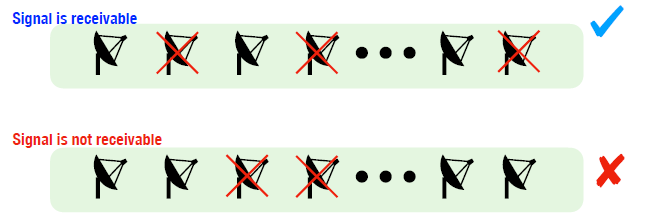MATH 2421: Lecture 1
Date: 2024-09-02 03:12:22
Reviewed:
Topic / Chapter: Introduction & Principle of Counting
summary
❓Questions
- can you elaborate more on "combinatorial proof"? What is the difference between algebraic ad combinatorial?
Notes
Probability by Combinatorial Analysis: Introduction
-
What is, and why probability?
probability: how likely something is to happen
- why should we learn it?
- randomness becomes prevalent in real life
- e.g. revenue of Apple store at NPM next month: random
- probability: fundamental tool for modelling, analyzing randomness
- e.g. what is the most likely revenue of apple store at APM next month?
- probability: fundamental tool for statistics, ML, etc.
- randomness becomes prevalent in real life
- why should we learn it?
-
Intuitions on probability
- what is the chance of selecting a red ball, among 1 green, 4 blue, and 4 red balls?
- what if we select 2 balls simultaneously?
- what's the change that both balls are red, from 2 blue, 2 red, and 1 green balls?
- 👨🎓:
- 👨🏫: correct!
- what is the chance of selecting a red ball, among 1 green, 4 blue, and 4 red balls?
-
Combinations
- case study: a communication system is of identical antennas in a linear order
- the system runs as long as no 2 conseq. antennas are defective
- and exactly out of antennas are defective
- what is the probability that the system does not fail?

- for a special case:
m=2; n=4-
all possible config. are:
0 1 1 0 0 1 0 1 1 0 1 0 0 0 1 1 1 0 0 1 1 1 0 0 -
in this case:
-
- for general , the probability is
- 👨🎓 programming style: can we use DP / recursion or Markov chain..?
- combinatorial analysis : mathematical theory of counting
- case study: a communication system is of identical antennas in a linear order
Principles of Counting
-
Experiments
- experiment
- used to denote a process whose outcome is random
- examples
- randomly toss a coin, roll a die, etc.
- basic principle of counting
- With two experiments performed, one resulting in any of possible outcomes , while another in any of possible outcomes , then together there are possible outcomes of the two experiments
- can be proved by enumerating all possible outcomes as pairs
- generalized basic principle of counting
- With experiments performed, and experiment resulting in any of possible outcomes, then together there are possible outcomes of the experiments
- experiment
Permutations
-
Permutations
- permutation: how many different (distinct) ordered arrangement of items are possible
- w/ distinct objects, the total number of different permutations are:
- where by convention
- proof: experiment being equivalent to arrange objects into positions
- for objects which are alike, there are
- proof: first compute permutation of objects
- then. for a set of same objects, consider themselves as a (sub) permutation too
- thus, divide it by no. of permutations that objects can have
- example: how many ways to rearrange the word "Mississippi"?
- (for M, s, p, and i, respectively)
- permutation: how many different (distinct) ordered arrangement of items are possible
-
Seating in circle
- now, only the relative position matters, not linear
- to count no. of arrangements, we can first compute all "linear" permutations
- and divide it by no. of seats (e.g. where index 0 can be located)
- thus, there are possible arrangements!
- if it is a necklace: as necklace (unlike Chinese tables) can be flipped!
Combinations
-
Introduction
- how many ways to choose items from , when the order does not matter?
- total permutation:
- no. of orderings:
- no. of combination:
- theorem: w/ distinct objects, no. of possible groups of choosing items are given by:
- also denoted by or
- latter one: aka binomial coefficient
- read " choose "
- also denoted by or
- properties
- for
- if :
- for
- how many ways to choose items from , when the order does not matter?
-
Useful combinatorial identities
-
theorem: for :
algebraic proof
combinatorial proof
- or: cheat bijections
- : no. of ways of choosing no. from
- count in a different ways:
- case 1:
1is chosen - case 2:
1is not chosen
- case 1:
-
theorem:
-
-
Examples
- example 1: committee
- a committee of 3: from a group of 20 ppl
- how many possible committees?
- Peter and Paul refuse to serve in the same committee; how many possibilities considering that?
- 18: no. of committee where two guys serve together
- alternatively: you can choose
- when neither are in the committee + one of P & P are in committee
- example 2: antenna defection
- total antenna; defective & functional; all functional / defective antenna are indistinguishable among them. how many linear orderings w/ no two consec. defectives?
- procedure
- align functional ones in linear order
- and, there are spots where defectives could be located
- thus:
- example 1: committee
